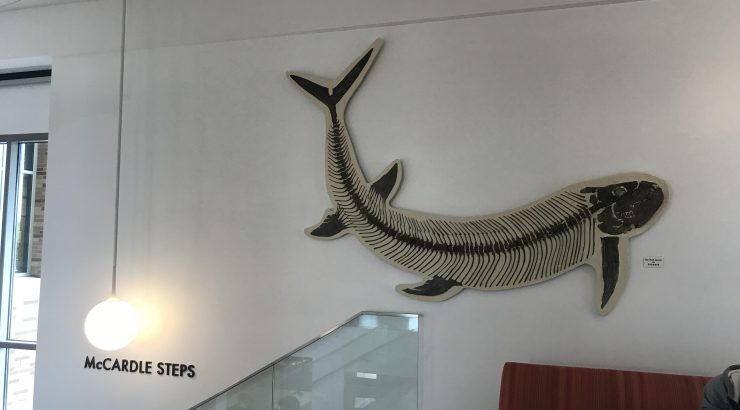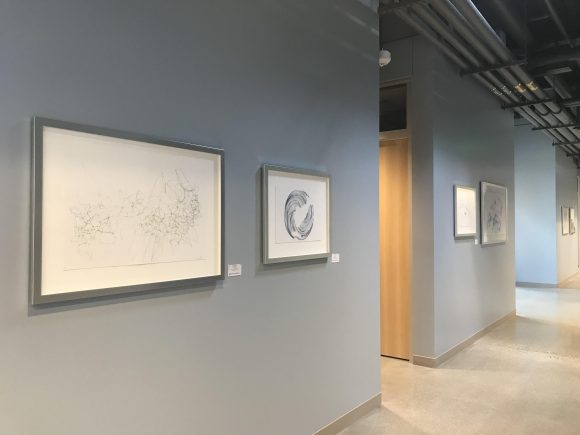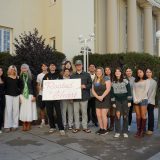Nature, Science, Art, and the Keck Does Art Reflect Science, or Does Science Reflect Art?
November 1, 2018
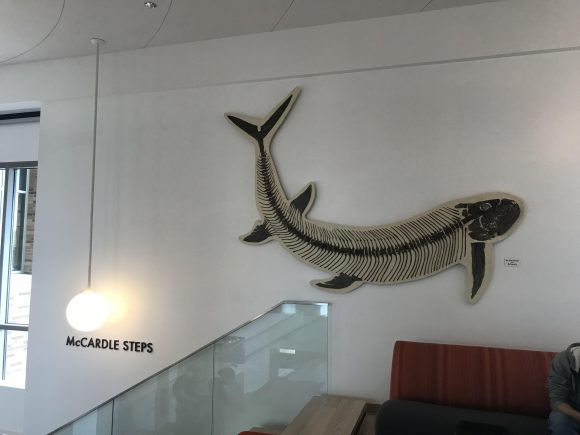
The Keck Center for Science and Engineering was designed to be a space ripe for collaboration. Walking the three floors of laboratories and classrooms, students and faculty are never far from minds opening and discoveries being made, able to look through windows to see science happening in real time. Many of the long hallways have been turned into huge white boards where equations, reminders, and well wishes for test takers can be written for all to see. The many study spaces – like the staircase steps and the outdoor balconies – help invigorate the passion for learning that drives the students of the Schmid College of Science and Technology who will one day change the world for the better.
Part of Keck’s design for collaboration was working with the Escalette Collection of Permanent Art here at Chapman University. There is no science without art, and there is no art without science, and that concept is what inspired Art Collections to choose the pieces that now hang proudly in the Keck Center.
The pieces that are now housed in the Keck range from a brand new lenticular lens mural by Santa Ana artist Elizabeth Turk made specifically for the Keck and an ancient, million-year-old cretaceous fish skeleton nicknamed “Chappy”. The art for the new building was chosen carefully to reflect science and discovery, like the hallway on the third floor dedicated Kellan Shanahan’s lithographic prints of different algorithms displayed in a two-dimensional format. Another third floor hallway is dedicated to amazing women in science who are often lost in mainframe science education, and two beautiful cyanotype prints by Chapman professor Lia Halloran called “Paper Dolls” depict a string of female “computers” at Harvard University in 1879 who are there to greet you as you step out of the elevator. These women cataloged stars, and ultimately discovered the distances between Earth and other galaxies. The fact that these female scientists were able to publish their work under their own names at a time when they were expected to give credit to the male professors that hired them is meant to ignite a flame in every female scientist studying at the Keck, as well as honor the memory and discoveries of the cornerstone female scientists that have come before.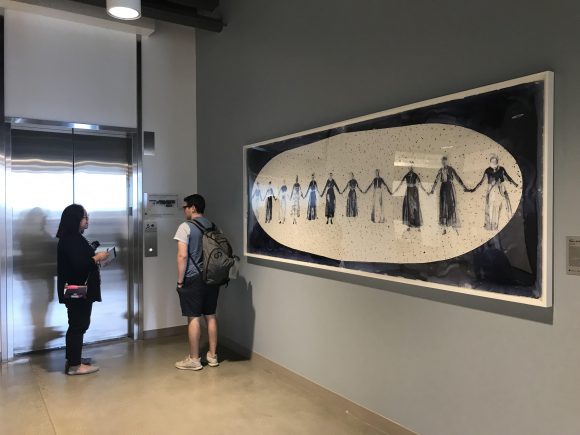
There is a buzz of excitement in the air for Keck’s 2018 debut, and the promise of scientific discovery and innovation is at the center of it all. Schmid College students and Keck faculty possess a passion for life, and passion for life is, at its core, what art is. Arts Collections was honored to work on this project and invites you to visit the new building to find a good place for a study group, do a few practice problems on the wall, converse with a professor, and view the Escalette pieces, discovering for yourself everything that connects science, nature, and art.
